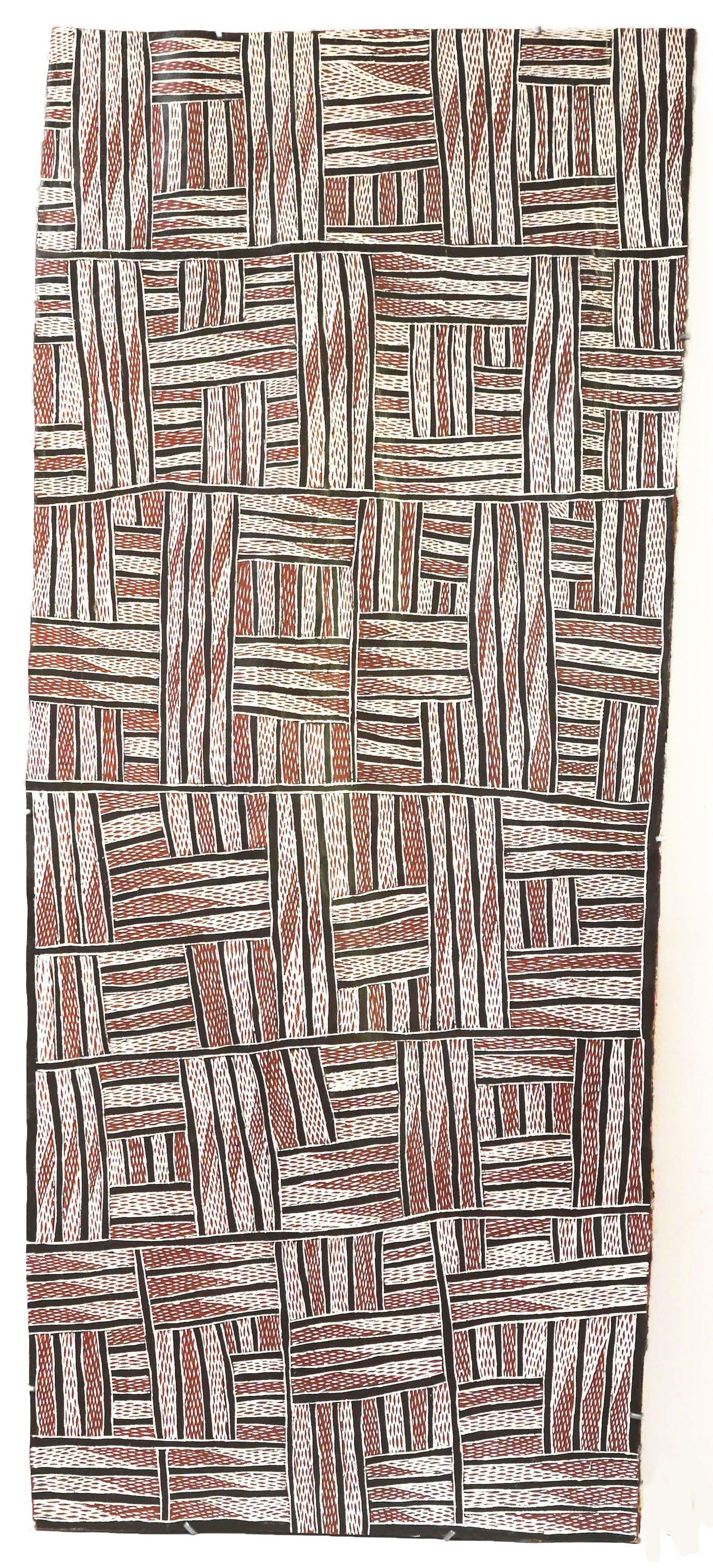
Birth of a Nation
These are three impressive women. Their art practice and spiritual identity are all very different. But there is a thread which ties them all together. They are all intimately connected with the Rirratjingu clan homelands of Yalaŋbara and Yirrkala. Dhuwarrwarr is the first female artist to be recognised as having the authority to paint sacred design from her father Mawalan. Djalinda is the daughter of Dhuwarrwarr’s older sister who also painted in her own right. Milminyina is the senior elder responsible for the Djambarrpuyŋu clan’s special relationship with the Rirratjiŋu in the estates of Bremer Island.
The landscape that these works originate from is very special. On the very top right corner of the Top End of the Northern Territory. It is mostly open unspoiled Stringybark forest fringed by white sand beaches and rocky outcrops and islets.
It is the home of the Yolŋu people and their identity is etched in the landscape. Each small estate is enshrined in manikay (sacred song) and miny’tji (sacred design). The songs take place in a grammatic tense which we do not have access to in English. At Yalaŋbara the Djaŋ’kawu Sisters coated in white foam and sea spray from their long oceanic journey from another dimension land/are landing/ will land on the beach under the towering dunes there. Dhuwarrwarr shows their footsteps in the steep slipping sand as they climb/are climbing/will climb. At the top of the dunes a creative act occurs. Dhuwarrwarr shows the spring gushing forth at dawn. They give birth to the first humans born on the Australian continent. These are Rirratjiŋu people. It is the birth of a nation.
This family is an important one. It was this family who led the charge in defending their sacred areas against the alliance of mining companies, missionaries and government who aimed to destroy it. The Yirrkala Church Panels, the Yirrkala Bark Petition and the Gove Land Rights Case were all led in part by Mawalan, Mathaman, Milirrpum, Wandjuk and Dadayŋa Marika. In the 1967 Referendum the modern Australia polity finally matured in allowing all people to be regarded as citizens.
As well as painting the origin point at Yalaŋbara Dhuwarrwarr has shown the estate of Gäma-Wukitj. This is the coastal area which wraps around Yirrkala from Witiyana (Rocky Point) to Dhamitjinya near the mouth of Melville Bay. It includes the shores of Bremer Island and holds several songlines. Djalinda paints these waters specifically between the mainland and the island. Milminyina presides over the ceremony which unites the Djambarrpuyŋu and Rirratjiŋu at a spring on that island.
From the origin of the Rirratjiŋu nation to the origins of our national democracy these paintings describe the underlying creative forces driving these outcomes.
- Will Stubbs
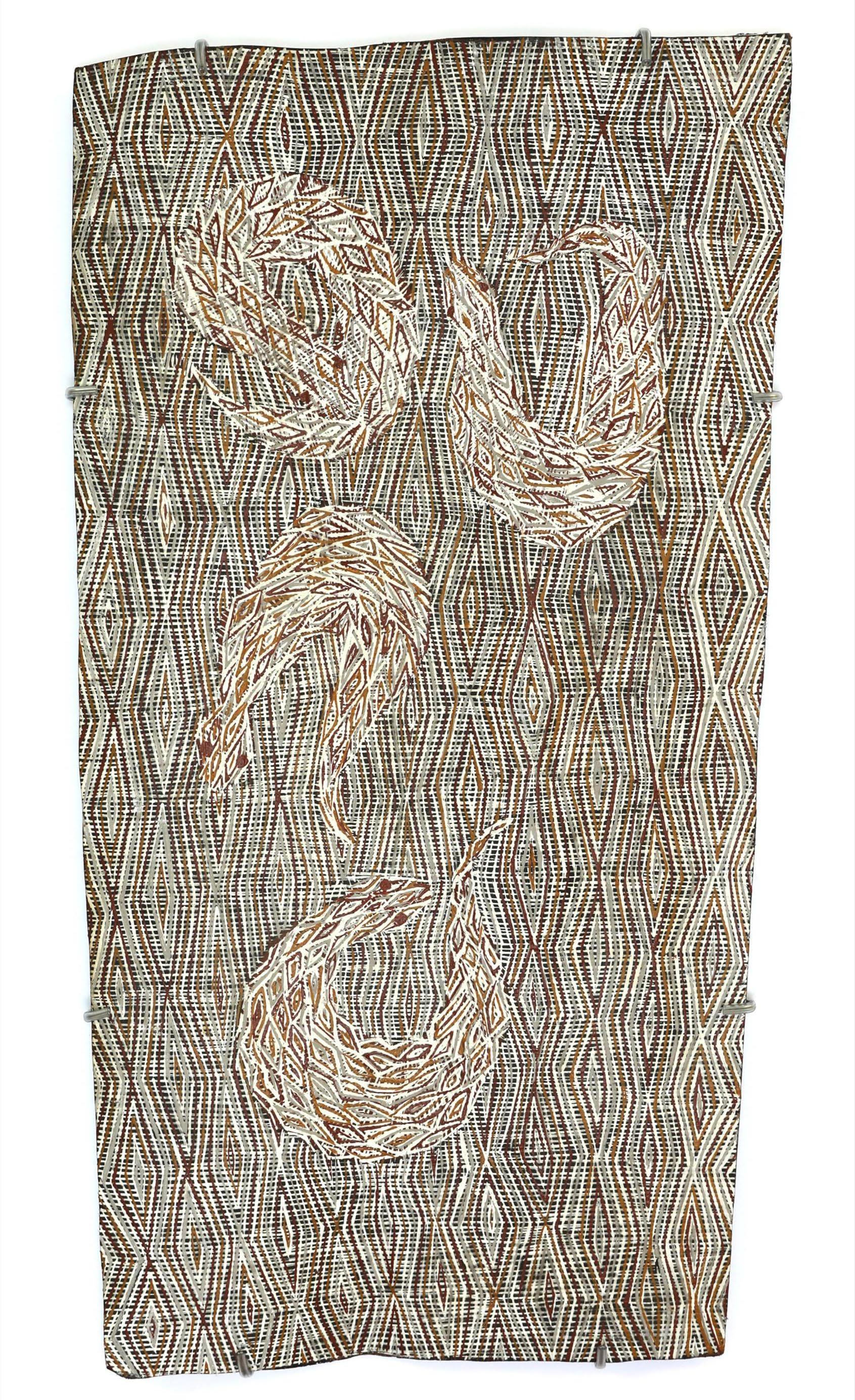
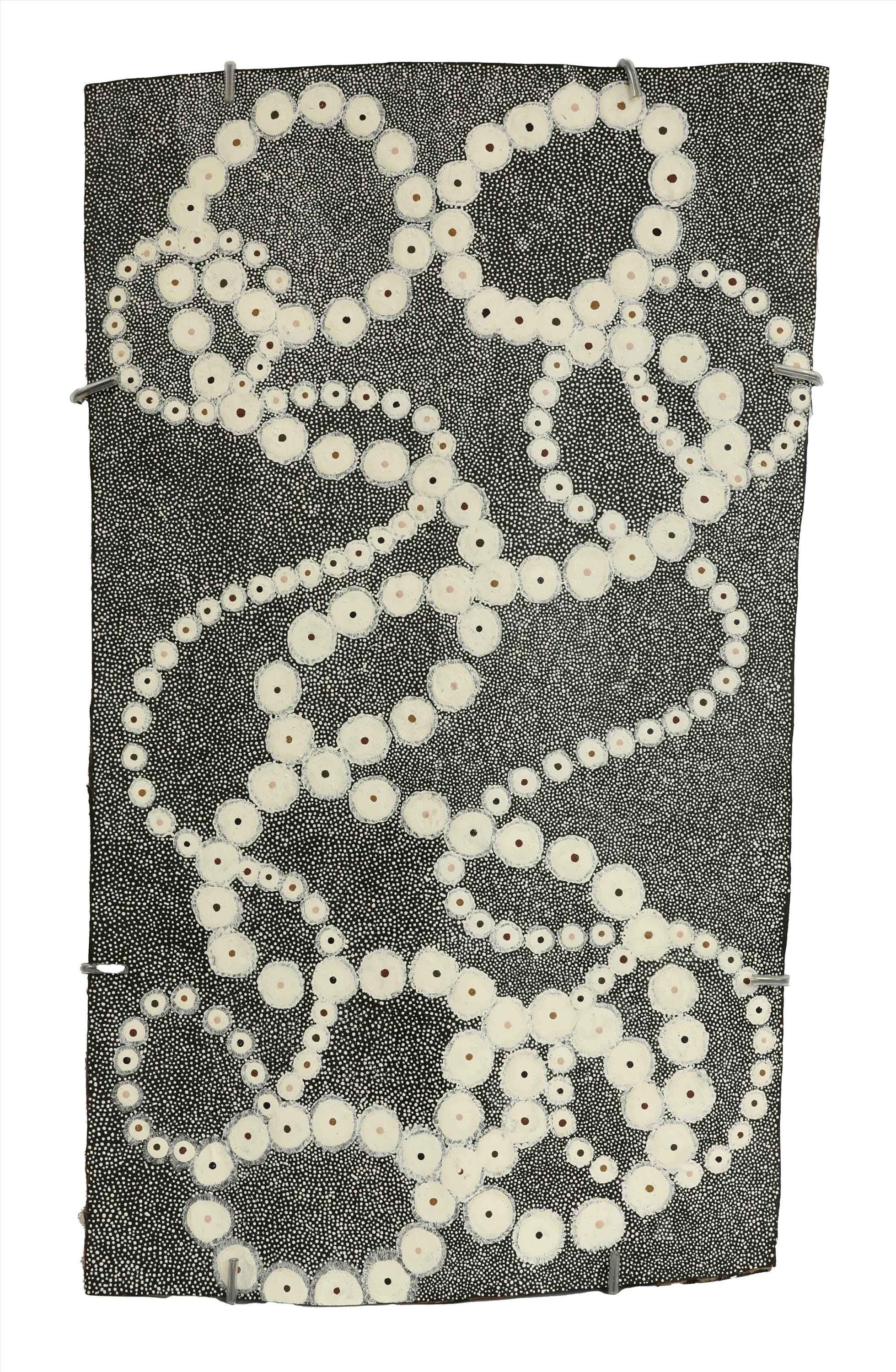
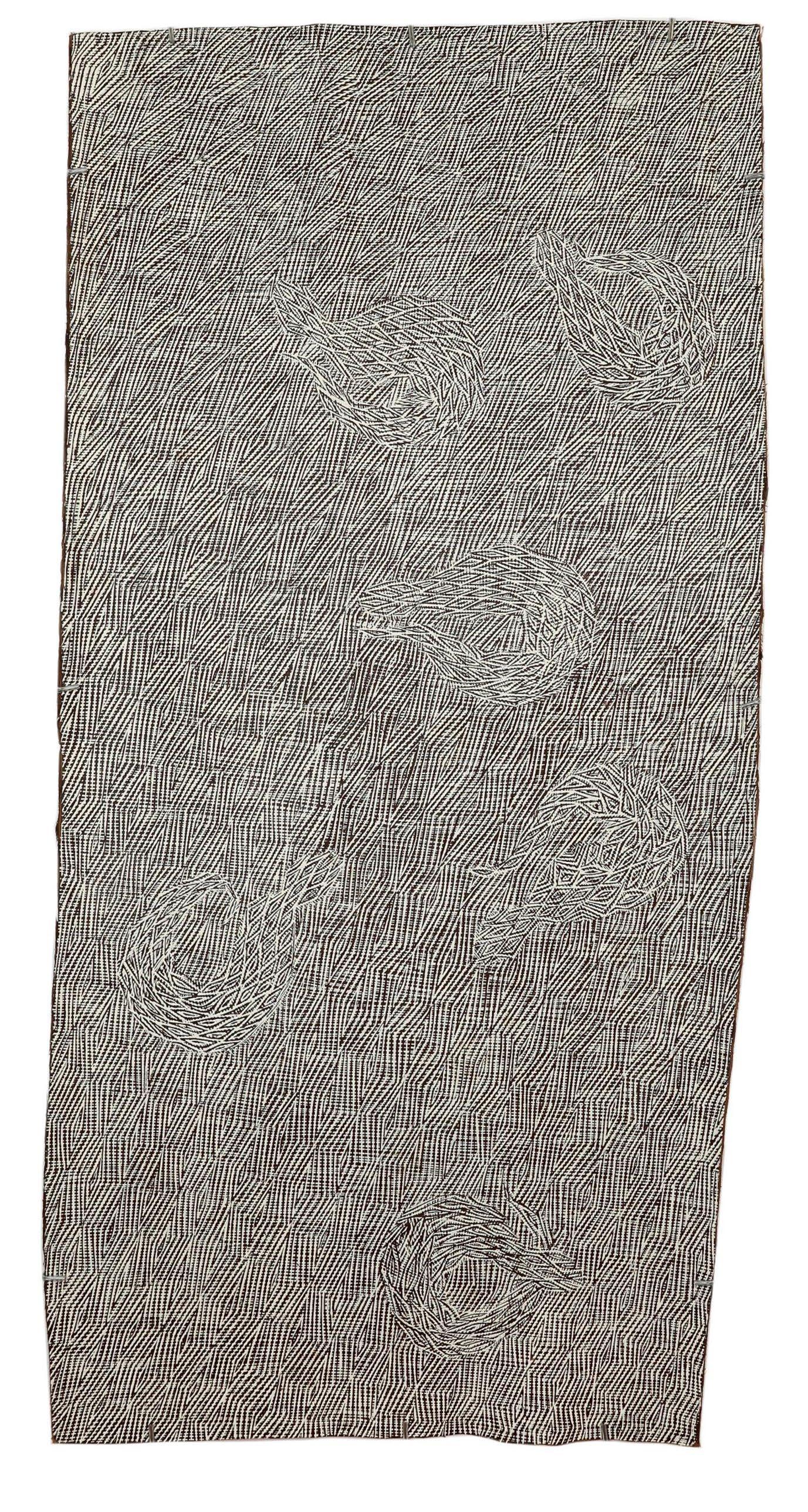
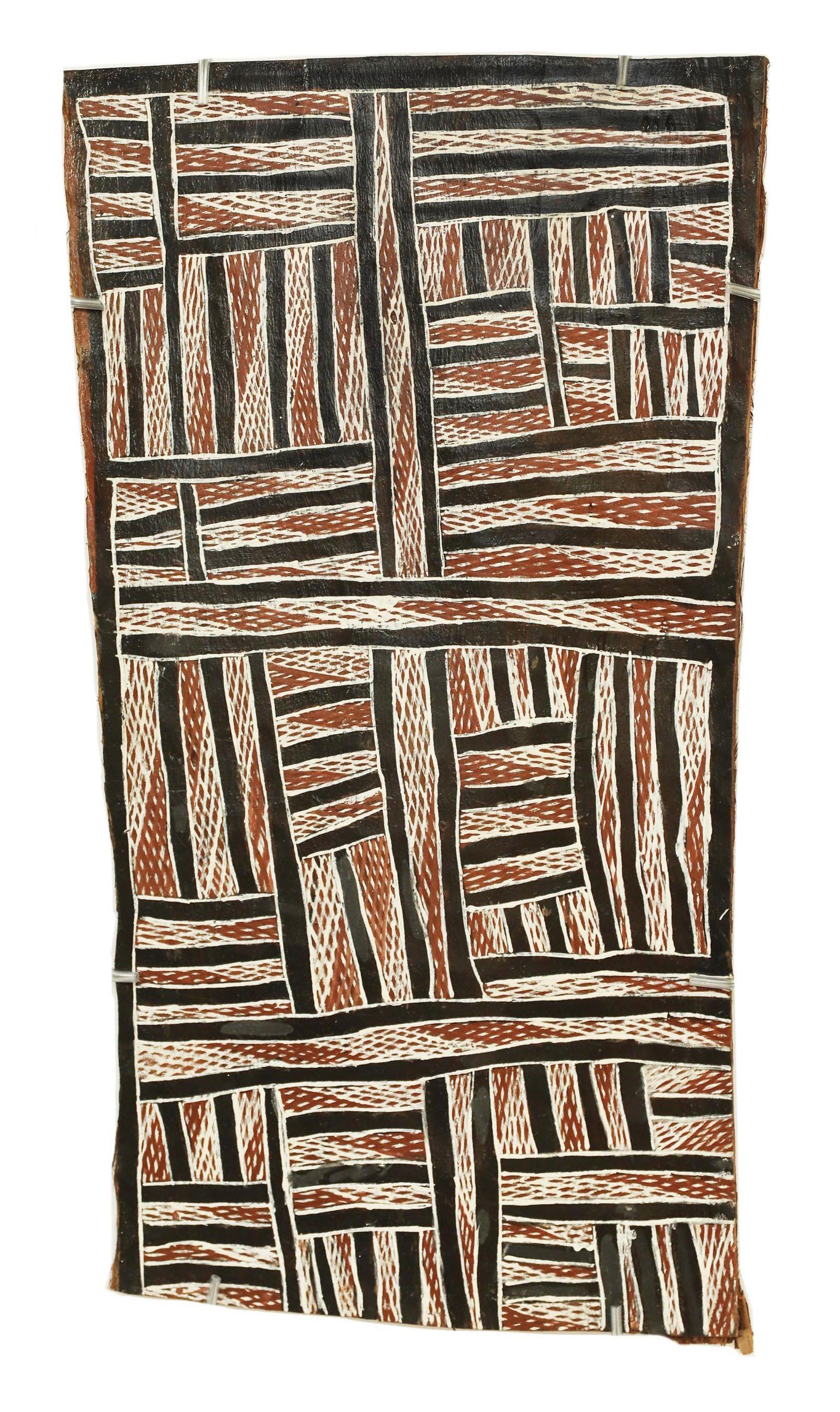
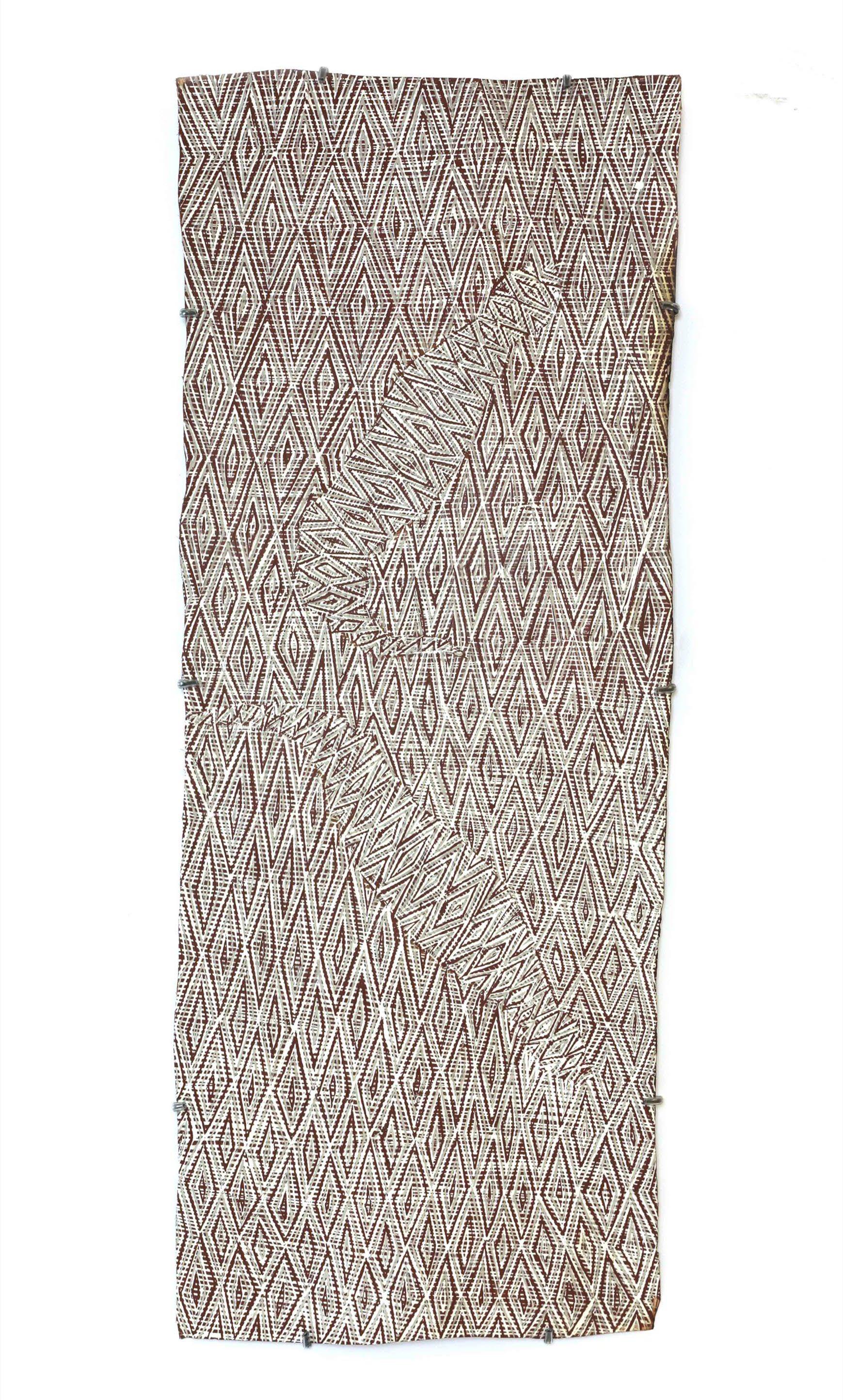
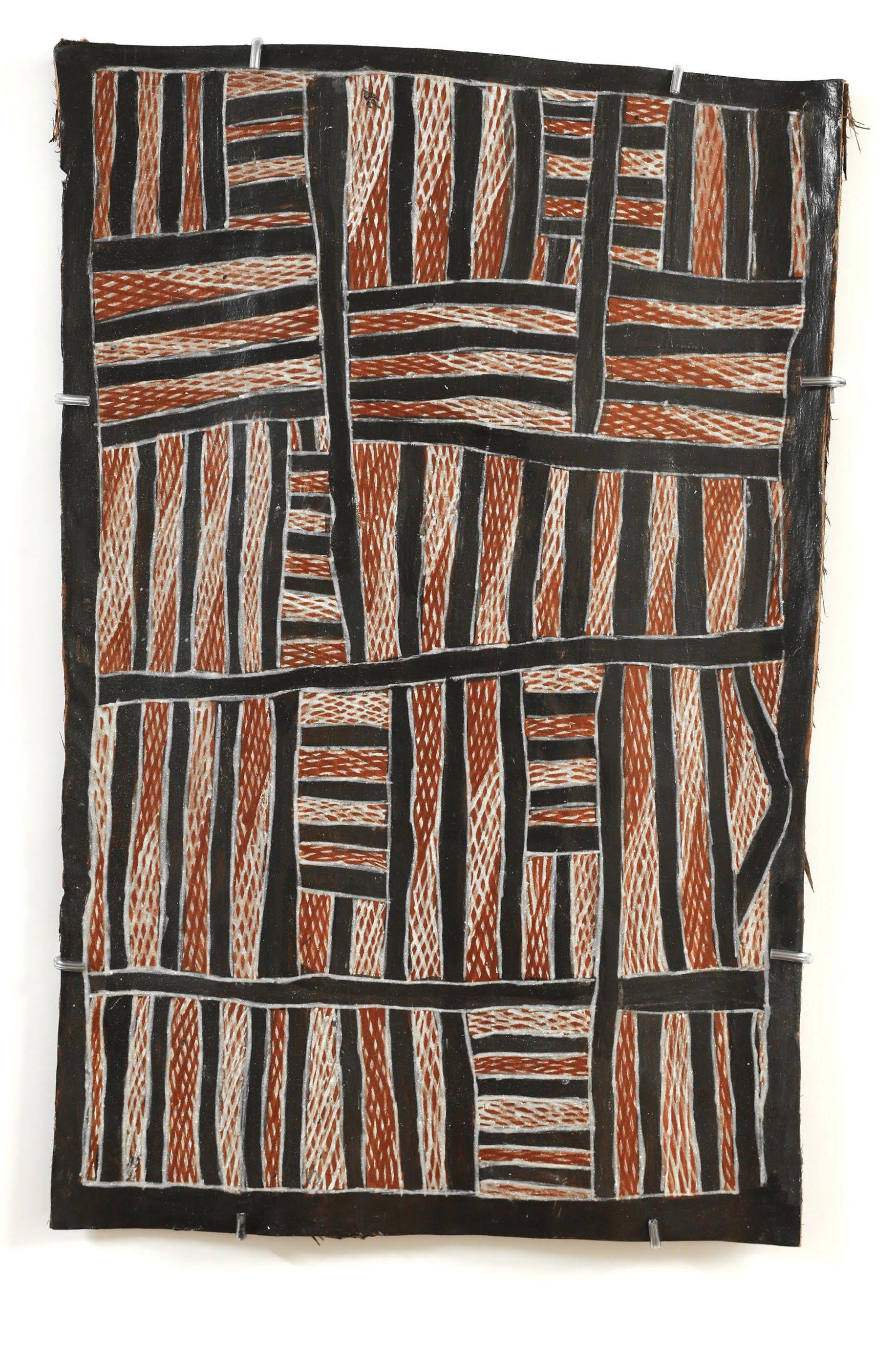
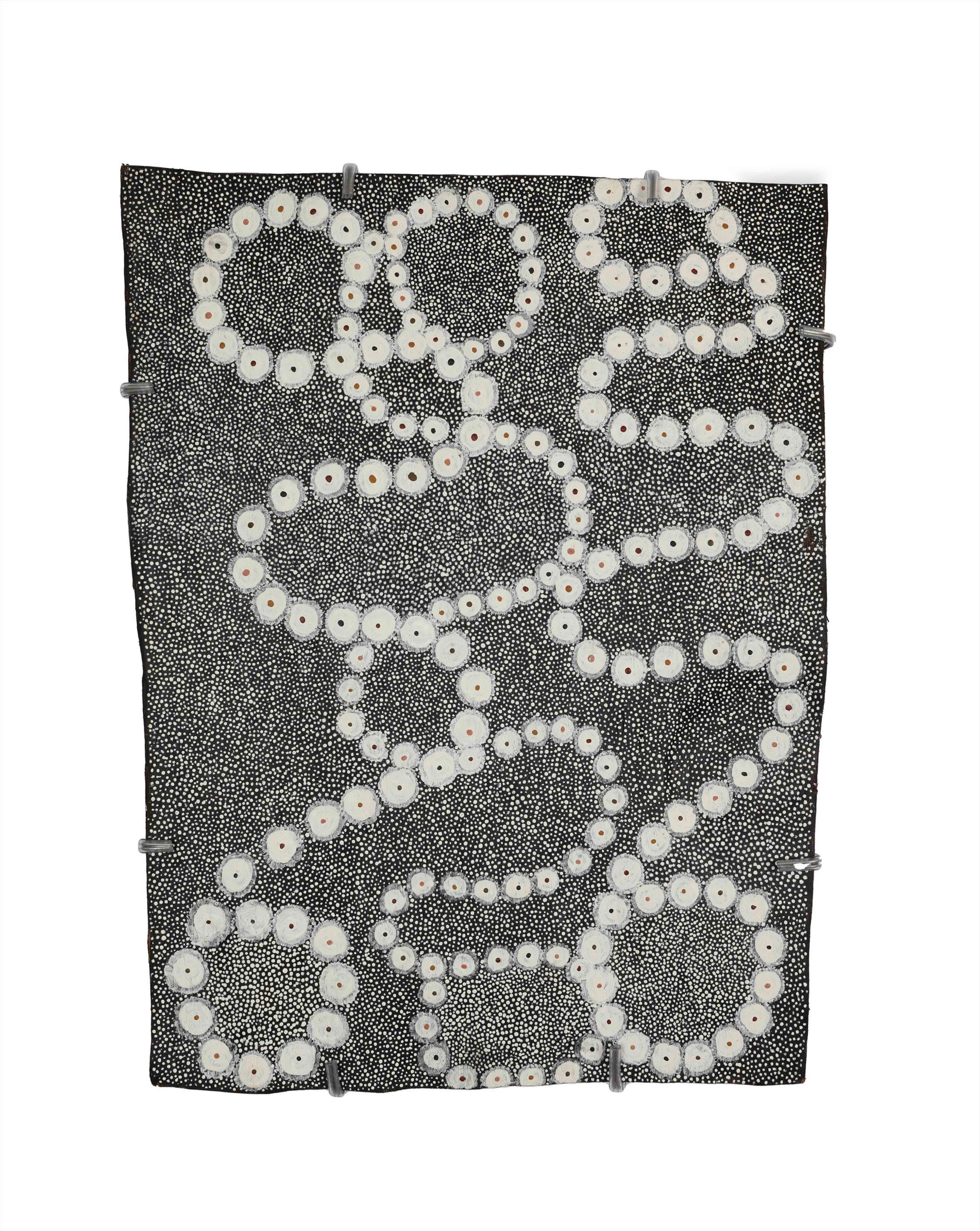

201 x 20 cm
226 x 23 cm

